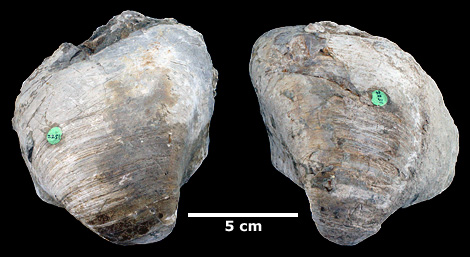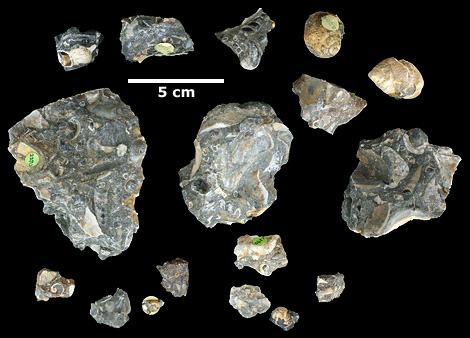In the orphaned U.S. Geological Survey’s (USGS) Menlo Park Invertebrate Collection, now housed in the UC Museum of Paleontology’s off-campus collections space in the Regatta Building, the work of prominent USGS collectors stands out. One of these dedicated and proficient invertebrate paleontologists was Timothy William Stanton, who amassed collections from over 100 localities, authored monographic research papers, and wrote more than 600 technical reports evaluating the age of collected specimens.
Stanton was born on September 21, 1860, in Monroe Country, Illinois. Early in his life, Stanton moved to Boulder, Colorado, where he received his Bachelor of Science and Master of Science from the University of Colorado. Stanton continued his graduate education in biology and geology at John Hopkins University and received a doctoral degree in those disciplines in 1897 from George Washington University.
Stanton’s name is encountered most often in association with Cretaceous invertebrates. His affinity for Cretaceous invertebrates developed when he lived in Boulder, surrounded by fossil-rich sediments of Cretaceous age. Stanton incorporated his research interests into his professional life when he was hired at the USGS and worked as an apprentice to Charles Abiathar White in the Cretaceous invertebrate collection. Starting in 1889, Stanton slowly made his way up the USGS ladder; he succeeded White as the head of the Cretaceous invertebrate collection, became the geologist in charge of the Paleontology and Stratigraphy branch, and in 1932, he became chief geologist of the USGS. Additionally, Stanton served as the president of the Geological Society of America and president of The Paleontological Society.

During his time at the Survey — that spanned over 46 years — Stanton maintained field research in Texas, Colorado, the Gulf Coastal Plain, and the Pacific Coast. While working in Colorado, Stanton produced a comprehensive description of Cretaceous fauna in a monograph entitled The Colorado Formation and Its Invertebrate Fauna. The work is still valued as a remarkable text.
Stanton retired from the Survey in 1935, however, he continued to act as the Custodian of Mesozoic Invertebrates at the US National Museum (now the National Museum of Natural History) until his death in 1953. Throughout his career, Stanton managed a balancing act between acquiring remarkable collections from his fieldwork efforts and the responsibilities of the multiple positions he held at the USGS. Stanton’s success is both reflected in the history of the USGS and his contributions to the Menlo Park Collection. UCMP is honored to permanently house this collection and to manage its care and access for current and future scientists. The collection is a remarkable paleontological record that is being updated and cared for by UCMP students and scientists in the 21st Century.
